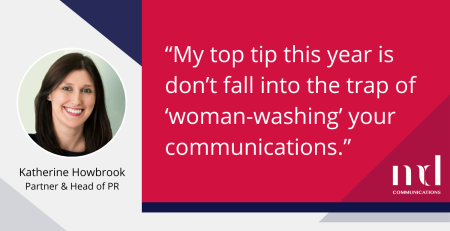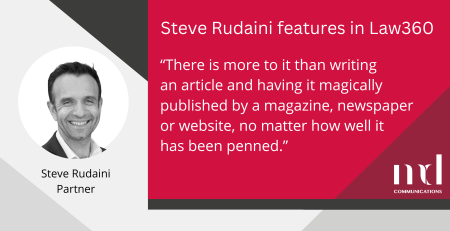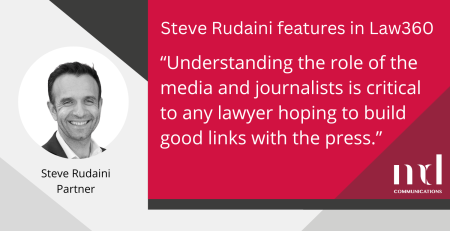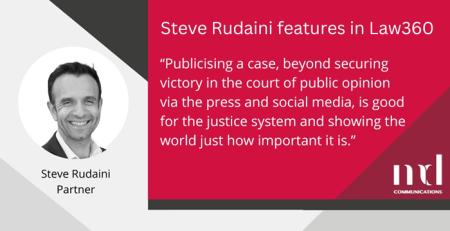In the first of our guest blogs by local journalists, Darren Slade, Group Business Editor at the Southern Daily Echo, Daily Echo Bournemouth, Dorset Echo, advises on the dos and don’ts when pitching a story.
The emails are in full flow again.
During the first coronavirus lockdown, a lot of PR and marketing people were telling me about clients who were scrapping their promotional activity, or at least putting it on hold.
A look at my normally crowded email inbox seemed to confirm that. It was far from empty, but activity had tailed off.
I even wrote a LinkedIn article on the subject, in which I said: “Now is not the time to stop communicating.”
A few months down the line, the level of PR activity seems to have picked up massively. The “pitch” emails are coming at me at the rate of around 100 a day, just as they did before anyone had heard of Covid-19. But the majority of those emails are distinctly spammy.
A lot of pixels are being expended on messages which are poorly targeted, insincere and not relevant to the people receiving them.
That, surely, is not good for anybody’s reputation.
Don’t do this
There’s a certain kind of email I receive by the dozen every day.
It starts with the perfunctory enquiry about my health – sometimes with added emphasis. “I so hope you are well.” Even though the sender doesn’t even use my name.
The subject line might begin “Re:”, making it look like a reply to something I’ve sent, even though we have never corresponded before.
The sender might start by complimenting me on the content of our websites, without giving enough specifics to suggest they’ve read any of it.
And then comes the “pitch”. A breathless account of a business or innovation, or the offer of an interview with the founder of a start-up – but with no indication why it’s relevant to our readership. (We’re a regional paper. It has to be based in our area.)
Often, it’s a story on a subject I don’t write about. (Business is my thing, not pets, or health, or food, unless there’s a business angle).
Days later, there tends to be an equally impersonal follow up. “Just getting back to you”, “I know how crazy busy you are”, “In case it got lost in the flood”, “Just circling back … Was this of interest?” It’s not hard to tell that it’s all in the template.
Email allows you to email hundreds of journalists, almost as easily as emailing one. But that doesn’t mean you should do so.
Some of those senders might be impressing their clients by telling them that their message has gone out to hundreds influential journalists. But if most of those journalists have quickly consigned the email to “deleted items”, what has it achieved?
Maybe try this instead
So, how do does a PR professional get the attention of a journalist who is facing an overwhelming amount of information and is hitting the “delete” button fairly zealously?
Here are a few thoughts.
Be relevant. From my point of view as a regional business editor, that starts with flagging up the local connection. But if you’re communicating with a national journalist with a specialism in business, health, property or anything else, the same principle applies.
Convey a compelling news “angle”. Journalists are taught to tell stories succinctly, starting with an “intro” that summarises the whole tale. If you can explain in one short sentence why your message is surprising, arresting, important, then you’re half way there.
Be genuine. In the age of coronavirus, I think people want to hear from people whose message is relevant, candid and sincere. It’s not all about identifying “hot button” topics and anticipating Google trends. Let’s hear what’s unique about you and your view of the world. That might mean owning up to some imperfections or setbacks.
Make yourself useful. Assuming you’ve got a story that’s surprising, arresting, important (see above), you can impress a journalist still further by giving them everything they need. Enough material for a full story, containing all the facts, powerful quotes, background information and a strong picture.
Become known. It takes time to be known to a journalist, of course. But if they recognise you as someone who has, in the past, always brought them valuable, relevant content – rather than the other kind – then their finger won’t be heading for the “delete” button. And they will be receptive to a phone call that says “I’ve got this news coming up. Do you think you’d be interested?”
You don’t need to be perfect, but you need to be genuine
It’s never been easier to broadcast to the world about how brilliant you are. You can go to the social media platform of your choice and see that.
But the value of a message that isn’t read, enjoyed and shared is (practically) zero.
There’s a lot of noise around in the PR and media worlds. But the right message can cut through that and find a bigger audience than ever before.












